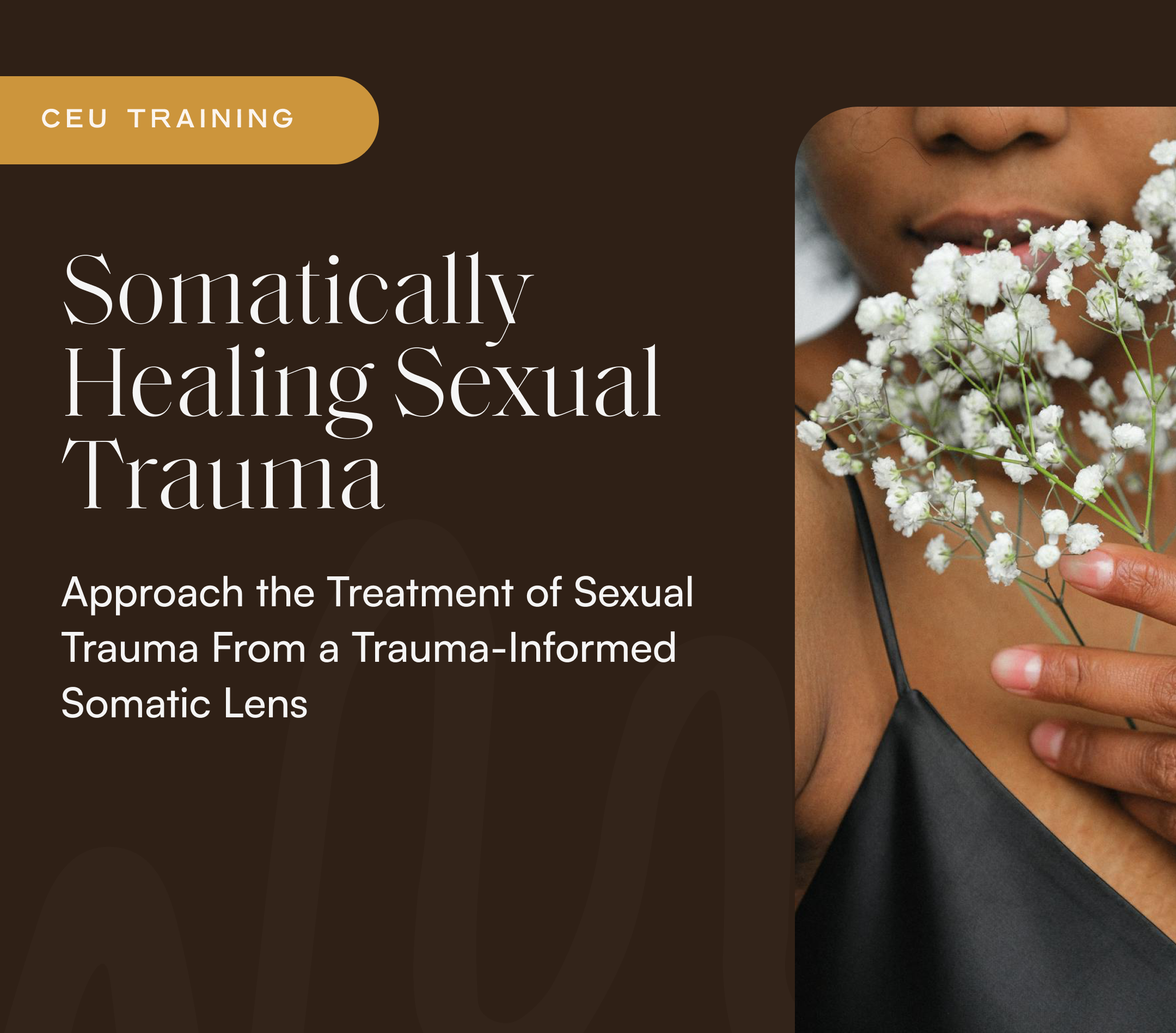
Course Description
In traumatic experiences, people are often pushed beyond their mental and physical capacity. The impact of common stress responses can lead to issues with cognitive processing and memory encoding, which are the foundation of cognitive-based therapeutic interventions (Van der Kolk, 2016). The focus on more cerebral approaches and even exposure-based approaches can exacerbate feelings of helplessness or shame as clients struggle to integrate the mind and body.
Somatic Experiencing and other body-oriented approaches are an effective addition to work with PTSD and prolonged trauma response experiences (Kuhfuß, Maldei, Hetmanek, Baumann, 2021). These interventions use bottom-up processing to help clients gradually reduce the activation associated with a traumatic event (Siegel, Körding, & König, 2000; Bouziane, Das, Friston, Caballero-Gaudes, & Ray, 2022). Through resourcing and body awareness, clients go through a “discharge process” that significantly reduces the impact of traumatic memories and symptoms (Brom, Stokar, Lawi, Nuriel‐Porat, Ziv, Lerner, & Ross, 2017).
In this CEU, therapists will learn how to integrate somatic tools in the treatment of sexual trauma. This approach can offer a safer and more integrated approach to trauma treatment, allowing survivors to reconnect with pleasure, safety, and self-agency in their lives.
Learning Objectives
- Identify what happens in the body during & after Sexual Trauma
- Demonstrate how to integrate somatic healing techniques into a trauma-informed therapeutic approach
- Identify factors that affect somatic healing from Sexual Trauma
- Describe at least 3 Somatic Techniques for the treatment of Sexual Trauma


